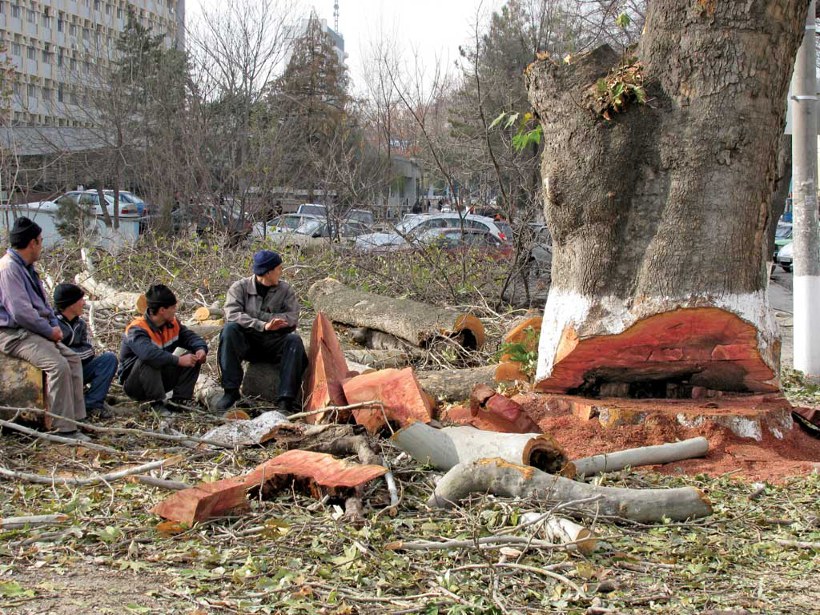
Chinar – The Endangered Heritage of Kashmir
“Chinar k patto pai toh rang lahu ka hai,
Aor loug kehty hai Mausam patjad ka hai”
By – Bazila Farooq
A living Kashmiri legacy is the chinar tree. It is regarded as Kashmir’s emblem and as a component of its cultural essence. In the vernacular Kashmiri language, it is commonly referred to as “Booune” or “Boeen,” and in Urdu, as chinar. The Chinar Leaf commemorates Kashmir. The Chinar, which is beautiful in red, mauve, golden, and yellow, adorns Kashmir’s autumnal scenery. The approach of fall has caused a rapid change in the scenery in Kashmir. It has softened the light, added a chilling mist to the air, and stripped away the majority of trees, including the massive Chinar (Maple). One can’t help but notice as they go down the streets that the famous Chinar trees’ rustling leaves are piercing the serenity. In terms of the language’s origins, “Chinar” is a Persian aphorism that may be rendered as “What a fire!” Due to the tree’s appearance in November, when it appears to have caught on fire, this name was given to it. The tree loses its leaves once a year since it is deciduous. In addition to other places, this tree may be found in Greece, Iran, Kashmir, and other places. Chinar trees are native to India, and they have played a significant role in the history of Kashmir for many years.
The Chinar trees of India are said to have originated from Persia. The tree was a favorite of Mughal Emperors Akbar, Nur-ud-din Muhammad Jahangir, and even Aurangzeb. Even the term “royal tree” was used to describe it. After he conquered Kashmir in 1586, the great Emperor Akbar is supposed to have planted some 1,200 trees. On Srinagar’s Dal Lake, there is a magnificent island called Char Chinar. The four Chinar trees that have been planted on the island have given the place its name. Emperor Jahangir purposefully placed these four trees so that their shadows would always fall on the island. They rank among Kashmir’s top tourist destinations. Bollywood has not been spared the effects of Chinar’s captivating beauty. Almost every film, including Mission Kashmir, Lamha, and Haider, has a Chinar in it, regardless of the plot. The fall Chinar has consistently been used as a collateral place for displays.
The tree holds a very unique place in every Kashmiri’s heart in addition to being an essential component of Kashmir’s heritage. Due to this, both visitors and residents find the garden to be gorgeous and a must-see location. A Chinar tree needs 150 years to achieve its full growth and 30 to 50 years to reach its mature height. Chinars have their beauty. They take a generation to grow and they age, it also takes a long time. Before actually dying they develop a huge hollow. Traditionally, this khoukhur (hollow) was believed to be the abode of jins. The strongest pistils were produced by Chinar wood, a tool from the hunting and gathering era that was obliterated by the industrial revolution. The Ghooshipar (mallet), however, which is used to dice the meat for Kashmiri Wazwaan, does not alter. Even though officially harvesting Chinar is prohibited and no one in Kashmir has a Chinar of his own, fashionable products like key chains and flower pots are nevertheless produced from the wood. Bijbehara town is also known as the “Town of Chinars” because of several Chinars there, especially two Chinar gardens (Paadshaahi Bagh and Dara Shikoh Garden). Bijbehara is the home to the oldest chinar tree in the region. The Chinnar tree has a great deal to offer in addition to enhancing Kashmir’s natural beauty. It offers shade on roadways and in parks throughout the summer. Its wood is also simple to saw. After chopping, it may be used to create furniture pieces as well as ornamental things like trays and tiny boxes. Walnut artwork is well known in Kashmiri décor. The beauty of the Chinar tree is truly unfathomable. It is an integral part of Kashmir’s rich history and Kashmir is incomplete without its beautiful Chinar. We hope that this legacy of the Chinar trees of Kashmir never dies and that the trees always stand tall in all their magnificent glory.
“Jis khaak ke zameer me hai aatish-e-chinar ,
Mumkin nahi ki sard ho woh khaak-e-arjumand.”
